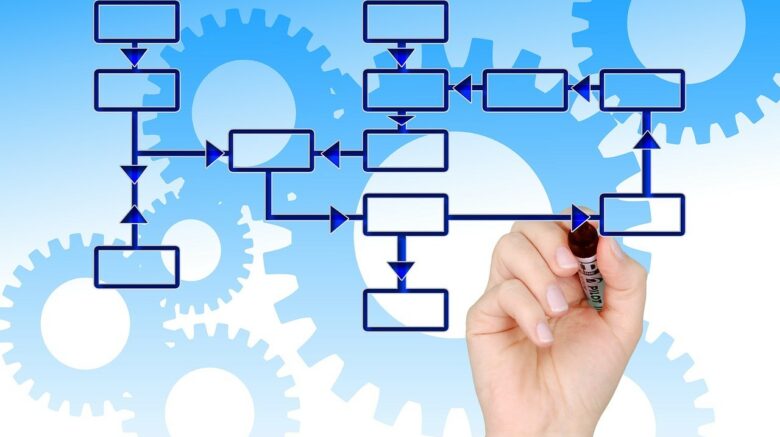As a rule, those not directly involved in the very process perceive it as something blurry, incomprehensible, and distant. We face it directly or indirectly every day, sometimes without awareness. No matter if you decide to visit the inline casino to try your luck on Heidi’s Slot Machine or visit the nearest bank department – everywhere you can see some features of this process.
If you do a little research, you can find many resources on this topic describing the four main theories implemented in countries around the world. It is the reason why it is useful to understand at least the main points of this process.
These theories were created for a reason: their main goal is to simplify the understanding, classification, and study of management principles at the state level. So, at present, the following types of management are distinguished:
- classical;
- new;
- modern
Each of the above options has its own views on management processes.
What is the Essence of Public Administration?
Before proceeding directly to the description of each of the theories, it is crucial to clarify the very concept. At present, it is defined as the activity of state bodies and persons delegated by it, aimed at practically implementing a clear algorithm and plan for the benefit of the whole society and strengthening the state. In most sources you can find on the internet, you can see that it is often contrasted with both political activity and policy formulation processes.
Despite its sometimes inconsistency, ideally, public administration aims to improve the welfare of the state’s population, improve defense capability, strengthen the state’s position in еру foreign policy arena, and so on. Also, its tasks include the creation of infrastructure, the promotion of the potential of each member of society, the outsourcing of partnerships to increase efficiency, and so on.
Basic Theories of Public Administration
Below, you can get an insight into the four main theories which were listed above. Scroll down to learn more about the fundamental processes that support us daily.
Classic
This theory also has another name that you can find in various scientific articles and publications – “structural”. It was the first theory with clear concepts and structured provisions, which facilitated understanding a rather complex process.
Also, it became the basis for the further evolution of the concept itself. If you study it deeper, you can see that its key characteristic is that it focuses on the main variables. Other distinguishing features of this theory are that it is absolutely independent and autonomous.
At the time of the creation of this approach, the situation was absolutely different from what we observe now. Then, any effective change could be promoted through atomism, command, unity, and specialization. This approach laid down four principles and determined its further development.
At present, some elements of this theory are still used, despite the fact that, in general, it is outdated and not suitable for a modern democratic society.
New
It is the initial type that was created to replace the classical territory to increase the efficiency of the process. The main difference in this method lies in the business-like orientation. As a result, it has increased adequate market competition between state enterprises and the private sector. If you study this topic from a geopolitical point of view, you can see fairly that not all governments decided to use this model due to political restrictions, autocratic principles, and so on.
Please mention that the main thing about the model lies in the fundamental change of priorities and the promotion of such principles as openness and the rejection of endless red tape. In its implementation, this model is based on a business-oriented method, adequate market challenges, and a focus on clients. The main emphasis is on developing an economic model where people are the top priority.
Modern
At the time of the creation of this theory, more attention began to be paid to the influence of various behavioral systems, which are widely used in various scientific schools. It has become obvious that no method can be effective enough without moving further away from centralized control.
In a nutshell, compared to the previous version, they began to pay even more attention to the freedom of action of managers and administrators and focus more on a client-oriented approach.

Postmodern
Despite the characteristic name, this theory is already 30 years old. Its creators and current settlers decide to go further and develop the direction begun in modern theory. The main reason for this was the objective positive changes that led to saving resources and time while increasing the quality of management.
Adherents of the post-major theory proposed to restructure the very structure of the political machine of governance even more deeply to optimize it and introduce more freedom of local elections.
In this way, a complex and rigid system has become more flexible and easily understood. Thanks to a plethora of methods that were actively used while creating this theory, its authors made a pure breakthrough in terms of contacts. Frankly speaking, this area has always been a non-priority target for reformers.
However, now professional relationships have become much simpler and more understandable at all levels of management. Another characteristic is its versatility. You can see its examples in almost every sector and industry: from the gambling industry, where you choose the game or bonus (for instance, https://play-fortune.pl/bonus-bez-depozytu/), to the high-tech IT industry.
You already face fewer bureaucratic obstacles that stand in your way and that you cannot solve without several officials you should contact with. From the moment the idea appears to its implementation, the process lasts the minimum time possible. Given that the theory of management in its modern form is very flexible, it is possible that in the near future, new approaches to its implementation will appear.
